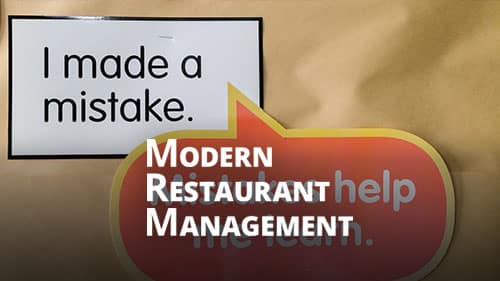Processing payroll is a complicated but essential task for restaurant owners, operators, and managers. Calculating, distributing, and managing restaurant payroll for your employees is complex, and any errors and non-compliance with government mandates can result in costly fines or taxes for your business.
Payroll is one of the most challenging and heavily regulated responsibilities for a restaurant and complying with regulations while accurately completing payroll on time requires dedicated resources. For restaurant owners and operators, the first step in understanding your payroll is to familiarize yourself with the basic concepts, regulations, and responsibilities.
As with every restaurant task, efficiency is key. Using the right payroll system and process can dramatically reduce the amount of time you spend every day paying your employees.
So what should the payroll process be for a restaurant? How do restaurants manage payroll? This article will walk you through the basics of payroll. For a more-detailed look at the process, check out our free guide on mastering restaurant payroll.
Payroll for restaurant employees
Payroll is the process through which a business calculates and distributes wages to employees. For the restaurant industry in particular, there are industry-specific laws about scheduling and tipped employees that need to be taken into consideration. Federal laws govern everything from employment tax to how to report total tip income earned.
In addition to the federal government’s Fair Labor Standards Act (FLSA), which sets regulations about minimum wage, overtime pay, recordkeeping, and child labor standards, states and municipalities may have additional laws. When you have restaurants in multiple states and cities, the difficulties of managing your payroll are multiplied. For the most accurate, detailed advice on payroll regulations and taxes applicable to you in your locale, consider consulting an accountant, using payroll software or following the guidance of the Internal Revenue Service (IRS).
As a restaurant owner or operator, there are two common options for running payroll:
- You may be able to process your payroll yourself, which may save you money on paper. However, manual in-house payroll is extremely time consuming, and you may make costly errors when navigating the complex world of payroll.
- If you have the option to outsource your payroll, using an accountant or payroll software can ensure you comply with regulations and your employees are paid correctly, on time.
Calculating your restaurant payroll depends on accurate data about employee hours worked and schedules. With an integration between tools like your restaurant accounting software and your payroll provider, automatic systems that create labor accrual journal entries can help streamline the time-consuming process.
How to create a payment schedule for your restaurant
How often you run payroll is up to you and your business. Businesses are free to choose their own payment cycle, but in the restaurant industry, the most common timeframe is paying employees every two weeks, but paying staff more frequently is a good strategy for employee retention. Tipped employees, like servers or bartenders may receive their base wage every two weeks, but they also frequently take home tips at the end of a shift (especially if they are in cash).
In the restaurant industry, most positions are paid on an hourly basis, except for front of house and kitchen management. This means that most paychecks may fluctuate slightly from pay period to pay period. However, by using tools such as restaurant scheduling software, you can ensure your labor expenses are as streamlined as possible by automating some of the scheduling process to match your labor cost goals.
Who qualifies as a tipped employee?
According to the United States Department of Labor, under the Fair Labor Standards Act (FLSA), “tipped employees are those who customarily and regularly receive more than $30 per month in tips.”
However, regulations around tipped employees can vary widely by state, making compliance more complex for multi-state restaurant businesses. For example, in Colorado, tipped employees are defined by the same FLSA standards, but their basic combined cash and tip minimum wage rate is $12.00. In states like Massachusetts, however, $20 in monthly tips qualifies as a tipped employee, and the tip minimum wage is $12.75.
What percentage of sales should payroll be?
Other than food cost, your restaurant labor cost is one of the biggest expenses for your restaurant. Rather than trying to compare a fixed dollar number between restaurants, most restaurants track labor cost as a percentage of sales using the following formula:
Total Labor Cost ÷ Total Sales = Labor cost as a percentage of total sales
The ideal labor cost percentage can vary widely with your particular restaurant’s business model. The common benchmark for most restaurants is a labor cost percentage between 25%-35% of sales, but this may range depending on your industry segment:
- 25%: quick service restaurants with faster customer transactions and less specialized labor
- 25-30%: fast casual dining, although this varies with different menu and service systems
- 30-35%: fine dining with in-house food production and time-intensive service components
Tracking your restaurant payroll percentage can give you insight into your expenses in real time, allowing you to make changes as needed. With reports tracking labor costs, like a daily profit & loss statement from your restaurant financial reporting software, you are able to make data-driven decisions in the moment to keep your costs within your forecasted budget.
Calculating earnings and deductions for your staff
Because of the strict regulations around payroll, you need to make sure that you spend time and resources properly calculating and distributing payroll to your employees. Calculations for tipped wages, overtime, withholding, and deductions are all based on gross pay for your employees and governed by federal, state, and local regulations.
In addition, you will need to track your own deductions that you can take as an employer. For example, as an employer, you may be able to deduct the cost of providing meals to employees at your restaurant as the cost of food or as a separate expense.
Rules and regulations around tipped employees
As mentioned above, although the Fair Labor Standards Act (FLSA) sets the federal rules around thresholds like minimum wage and overtime pay for businesses, every state and locality may also have a separate set of laws and regulations on top of the federal guidance.
For example, as of January 1, 2020, 21 states had a higher (but varied) minimum wage than the federal level, and on top of that, 44 localities had a higher minimum wage than the state in which they are located. Especially for multi-location restaurants, keeping track of minimum wages and regulations can be a time-consuming and complicated process.
Your restaurant business needs to prove you are following minimum wage laws through calculating employee tips as a part of their hourly wage, through applying a server tip credit.
In addition to federal guidelines like the Federal Insurance Contribution Act (FICA) Tip Credit, mandating the credit (if any) that can be taken varies by state, with some states enacting further regulations.
To learn more about how minimum wages range for tipped employees by state, check the U.S. Department of Labor’s Wage and Hour Division resource on minimum wages for tipped employees. In addition, the Economic Policy Institute logs historical minimum and subminimum wages by state with its minimum wage tracker and tipped minimum wage tracker.
In addition to tipped minimum wage regulations, some states are now enacting what is called fair or predictive scheduling legislation, a type of labor requirement that regulates scheduling, overtime, and payment practices. Local mandates may include requirements about predictable pay, regular scheduling, or employee breaks.
Tax issues you need to understand
Your restaurant business must pay a payroll tax when you compensate employees, based on the wages you are disbursing. They are usually calculated as a percentage of the salaries that you pay your staff. These taxes are used to finance social insurance programs, such as Social Security and Medicare. The largest of these social insurance taxes are the two federal payroll taxes, which show up as FICA and MEDFICA on your employees’ pay stubs. The first is a 12.4% tax to fund Social Security, and the second is a 2.9% tax to fund Medicare, for a combined rate of 15.3%. Half of payroll taxes (7.65%) are remitted directly by employers, while the other half (7.65%) are taken out of workers’ paychecks.
In addition to ensuring you are documenting your staffs’ minimum wage correctly, both employees and employers need to calculate and report tips accurately because tips are taxable income. As an employer, setting up tip-tracking systems like daily tip reports in your restaurant management software can help ensure your payroll and tip reporting is accurate.
How long should you maintain payroll records?
A general guideline in the restaurant industry is that restaurants maintain their payroll records for three years. However, special circumstances like a missed return, a fraudulent return, or misreported income may mean that you should keep your records for six or more years. A tax specialist or accountant should be able to help you decide what storage and record keeping system is best for your business. Payroll software maintains these records for you.
Conclusion
Payroll is a constantly recurring task for your restaurant. It is critical to process restaurant payroll accurately and on time, both for your employees and for your status as a business. Whether you keep it in house or outsource to payroll software, understanding the basics of payroll allows you to make the best decision for your staff and management team.
Restaurant365 incorporates scheduling software, Payroll + HR software, accounting software, restaurant inventory management software, and restaurant operations software into an all-in-one, cloud-based platform that’s fully integrated with your Point-of-Sale system, as well as to your food and beverage vendors, payroll vendor, and bank. If you’d like to learn more about optimizing your labor costs and tracking data for payroll processing, schedule a Restaurant365 demo.



